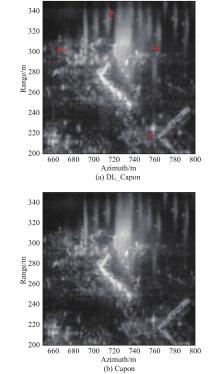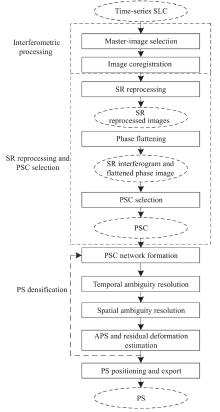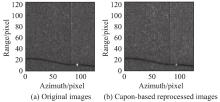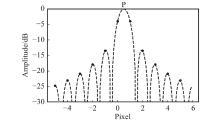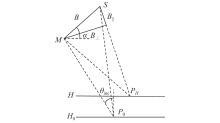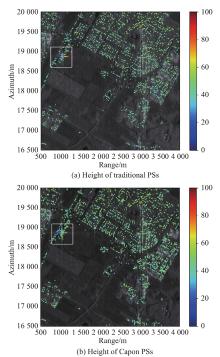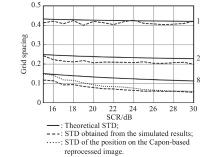| 1 |
BIANCHINI S, PRATESI F, NOLESINI T Building deformation assessment by means of persistent scatterer interferometry analysis on a landslide-affected area: the Volterra (Italy) case study. Remote Sensing, 2015, 7 (4): 4678- 4701.
doi: 10.3390/rs70404678
|
| 2 |
FERRETTI A, PRATI C, ROCCA F Permanent scatterers in SAR interferometry. IEEE Trans. on Geoscience and Remote Sensing, 2001, 39 (1): 8- 20.
doi: 10.1109/36.898661
|
| 3 |
BLANCO-SANCHEZ P, MALLORQUI J J, DUQUE S The coherent pixels technique (CPT): an advanced DInSAR technique for nonlinear deformation monitoring. Pure and Applied Geophysics, 2008, 165 (6): 1167- 1193.
doi: 10.1007/s00024-008-0352-6
|
| 4 |
CROSETTO M, BIESCAS E, DURO J, et al Generation of advanced ERS and Envisat interferometric SAR products using the stable point network technique. Photogrammetric Engineering and Remote Sensing, 2008, 74 (4): 443- 450.
doi: 10.14358/PERS.74.4.443
|
| 5 |
BERARDINO P, FORNARO G, LANARI R, et al A new algorithm for surface deformation monitoring based on small baseline differential SAR interferograms. IEEE Trans. on Geoscience and Remote Sensing, 2002, 40 (11): 2375- 2383.
doi: 10.1109/TGRS.2002.803792
|
| 6 |
MORA O, MALLORQUI J J, BROQUETAS A Linear and nonlinear terrain deformation maps from a reduced set of interferometric SAR images. IEEE Trans. on Geoscience and Remote Sensing, 2003, 41 (10): 2243- 2253.
doi: 10.1109/TGRS.2003.814657
|
| 7 |
HOOPER A, ZEBKER H, SEGALL P, et al A new method for measuring deformation on volcanoes and other natural terrains using InSAR persistent scatterers. Geophysical Research Letters, 2004, 31 (23): 1- 5.
|
| 8 |
HOOPER A, ZEBKER H A Phase unwrapping in three dimensions with application to InSAR time series. Journal of the Optical Society of America A, 2007, 24 (9): 2737- 2747.
doi: 10.1364/JOSAA.24.002737
|
| 9 |
FERRETTI A, FUMAGALLI A, NOVALI F, et al A new algorithm for processing interferometric data-stacks: SqueeSAR. IEEE Trans. on Geoscience and Remote Sensing, 2011, 49 (9): 3460- 3470.
doi: 10.1109/TGRS.2011.2124465
|
| 10 |
PERISSIN D, WANG T Repeat-pass SAR interferometry with partially coherent targets. IEEE Trans. on Geoscience and Remote Sensing, 2012, 50 (1): 271- 280.
doi: 10.1109/TGRS.2011.2160644
|
| 11 |
DEGRAAF S R SAR imaging via modern 2D spectral estimation methods. IEEE Trans. on Image Processing, 1998, 7 (5): 729- 761.
doi: 10.1109/83.668029
|
| 12 |
ZHANG H, LOPEZ-DEKKER P Persistent scatterer densification through the application of Capon- and APES-based SAR reprocessing algorithms. IEEE Trans. on Geoscience and Remote Sensing, 2019, 57 (10): 7521- 7533.
doi: 10.1109/TGRS.2019.2913905
|
| 13 |
GOODMAN J W. Introduction to Fourier optics. New York: McGraw-Hill, 1996.
|
| 14 |
BORISON S, STEPHEN B B, KEVIN M C Super-resolution methods for wideband radar. Journal of Lincoln Lab, 1992, 5 (3): 441- 461.
|
| 15 |
WANG Z M, WANG W W Fast and adaptive method for SAR superresolution imaging based on point scattering model and optimal basis selection. IEEE Trans. on Image Processing, 2009, 18 (7): 1477- 1486.
doi: 10.1109/TIP.2009.2017327
|
| 16 |
ZHU X X, BAMLER R Super-resolution power and robustness of compressive sensing for spectral estimation with application to spaceborne tomographic SAR. IEEE Trans. on Geoscience and Remote Sensing, 2012, 50 (1): 247- 258.
doi: 10.1109/TGRS.2011.2160183
|
| 17 |
SHEN H F, LIN L P, LI J, et al A residual convolutional neural network for polarimetric SAR image super-resolution. ISPRS Journal of Photogrammetry and Remote Sensing, 2020, 161, 90- 108.
doi: 10.1016/j.isprsjprs.2020.01.006
|
| 18 |
CAPON J High-resolution frequency-wavenumber spectrum analysis. Proceedings of the IEEE, 1969, 57 (8): 1408- 1418.
doi: 10.1109/PROC.1969.7278
|
| 19 |
LI J, STOICA P An adaptive filtering approach to spectral estimation and SAR imaging. IEEE Trans. on Signal Processing, 1996, 44 (6): 1469- 1484.
doi: 10.1109/78.506612
|
| 20 |
DU L, LI J, STOICA P Fully automatic computation of diagonal loading levels for robust adaptive beamforming. IEEE Trans. on Aerospace and Electronic Systems, 2010, 46 (1): 449- 458.
doi: 10.1109/TAES.2010.5417174
|
| 21 |
YAGUE-MARTINEZ N, PRATS-IRAOLA P, RODRIGUEZ GONZALEZ F, et al Interferometric processing of Sentinel-1 TOPS data. IEEE Trans. on Geoscience and Remote Sensing, 2016, 54 (4): 2220- 2234.
doi: 10.1109/TGRS.2015.2497902
|
| 22 |
ZHANG H, LOPEZ-DEKKER P. Persistent scatterer densification through Capon based SAR reprocessing for Sentinel-1 TOPS data. IEEE Geoscience and Remote Sensing Letters, 2021. DOI: 10.1109/LGRS.2020.3048370.
|
| 23 |
ZHANG H, LOPEZ-DEKKER P, LI S Combination of super-resolution PSI and traditional PSI by identification of homogeneous areas. IEEE Access, 2020, 8, 181640- 181649.
doi: 10.1109/ACCESS.2020.3028491
|
| 24 |
LOPES A, TOUZI R, NEZRY E Adaptive speckle filters and scene heterogeneity. IEEE Trans. on Geoscience and Remote Sensing, 1990, 28 (6): 992- 1000.
doi: 10.1109/36.62623
|
| 25 |
DHEENATHAYALAN P, SMALL D, SCHUBERT A, et al. High-precision positioning of radar scatterers. Journal of Geodesy, 2016, 90(5): 403–422.
|
 ), Bin CUI1,2(
), Bin CUI1,2( ), Zhichao GUAN3,*(
), Zhichao GUAN3,*( ), Han DUN4(
), Han DUN4( )
)
